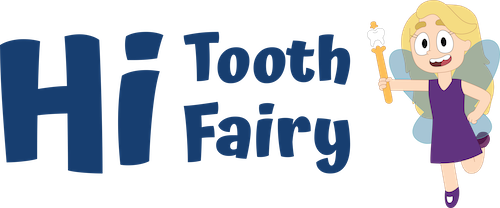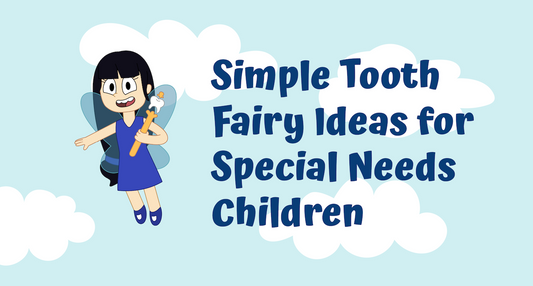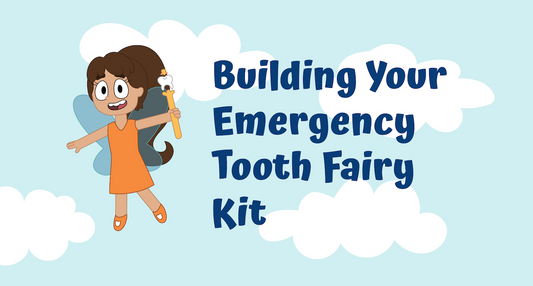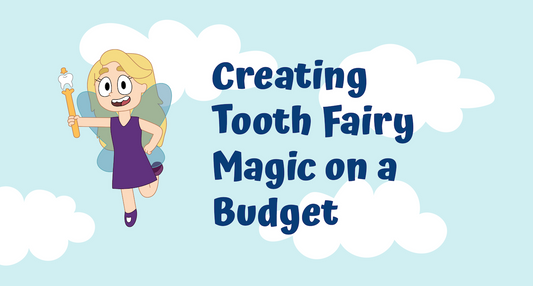7 Heartwarming Ways to Create and Preserve Tooth Fairy Memories That Last
Each lost tooth represents a precious childhood milestone worth preserving. While the tooth fairy may take the teeth away, the memories of these special moments can be captured and cherished for years to come. From digital tooth tracking to creative keepsake ideas, these seven heartwarming methods will help you document your child's tooth fairy journey from first wiggle to final visit. Start these memory-keeping traditions early to create a complete collection of tooth loss milestones that both you and your child will treasure.
Create a Special Tooth Loss Journey Journal
What you'll need:
- Dedicated journal or notebook
- Pens, markers, or colored pencils
- Optional: photo printer for adding images
Why this works: A tooth journal creates a comprehensive record of your child's entire tooth-losing experience, capturing not just the physical milestone but also the emotions, reactions, and magical moments surrounding each tooth. This chronological documentation becomes increasingly precious as children grow and the tooth fairy years become distant memories.
Start a dedicated journal where you record each lost tooth, including the date, which tooth was lost, how it came out, your child's reaction, and any special tooth fairy happenings. Add photos of your child's changing smile, their excited face after discovering tooth fairy gifts, or even the tooth itself before it goes under the pillow. Include your child in the process by having them draw pictures or write their own entries about how it felt to lose each tooth.
For a complete memory collection, start the journal when their first tooth becomes loose and continue until the final baby tooth falls out. This creates a wonderful keepsake that captures approximately six years of childhood development in one special book.
Design a Digital Tooth Loss Timeline
What you'll need:
- Smartphone or digital camera
- Digital photo album or folder
- Optional: photo editing app for captions
Why this works: Digital documentation offers flexibility, shareability, and permanence that physical records might lack. Digital collections can be easily backed up, shared with distant relatives, and eventually transferred to your child when they're older. The visual timeline clearly shows your child's developing smile through the years.
Create a dedicated digital photo album specifically for tooth fairy moments. Take consistent photos of your child's smile after each tooth loss, ideally from the same angle to clearly show the progression. Include close-ups of gaps, photos of them holding their lost teeth, and joyful moments discovering what the tooth fairy left behind.
Add captions with dates, tooth details, and special memories or quotes from your child. Consider creating a yearly "smile portrait" showing all teeth lost that year. For a modern touch, the Hi Tooth Fairy app offers digital tooth tracking features that enhance this documentation with interactive elements.
Craft a Tooth Fairy Correspondence Collection
What you'll need:
- Small decorative box or folder
- Tiny paper for fairy notes
- Fine-tipped pens
- Optional: decorative elements like pressed flowers or fairy stickers
Why this works: Two-way communication between your child and the tooth fairy creates a magical childhood experience while preserving authentic glimpses of your child's thoughts, questions, and personality at different ages. The collection of notes becomes increasingly precious as children outgrow the tooth fairy belief.
Save all written communication between your child and the tooth fairy, including notes your child writes asking questions or sharing thoughts about losing teeth, and the tiny responses the tooth fairy leaves behind. Store these precious exchanges in a decorative box or special folder.
Encourage regular correspondence by having the tooth fairy occasionally leave questions for your child to answer before the next lost tooth. This creates an ongoing magical dialogue that spans years of development. For younger children, help them dictate messages or draw pictures for the tooth fairy, preserving their early attempts at communication.
Assemble a Tooth Fairy Memory Box
What you'll need:
- Decorative box with compartments
- Small envelopes or containers for keepsakes
- Index cards or small papers for notes
- Decorative elements for personalization
Why this works: A physical collection of tooth fairy mementos creates a tangible connection to childhood that can be revisited and shared for generations. Unlike digital collections, physical memory boxes engage multiple senses with their contents, making the experience of reviewing them especially meaningful.
Create a special box containing mementos from each tooth fairy visit: copies of notes, photos, small gifts the tooth fairy brought, or other special items that tell the story of your child's tooth fairy experiences. Label everything with dates and which tooth it corresponds to.
Include other keepsakes like the first lost tooth (if your tooth fairy tradition allows keeping the first one), a lock of hair from the same age, or pressed flowers from your garden at the time. For a complete collection, add developmental context with notes about other milestones happening around the same time as each tooth loss.
Produce a Tooth Loss Photo Series
What you'll need:
- Camera or smartphone
- Photo props (optional)
- Consistent background or setting
- Photo album or digital collection tool
Why this works: Consistent, creative photography creates a visual record that dramatically showcases your child's development. When viewed as a series, these photos tell the story of their growth in a way that individual snapshots cannot, highlighting the transformation from early childhood to the cusp of adolescence.
Create a signature photo setup that you recreate with each lost tooth. This might be a particular pose, expression, background, or prop that remains consistent while your child and their smile change. Consider using a letterboard to display which tooth number was lost, the date, or a funny quote from your child about the experience.
For added creativity, develop a themed series, such as "gaps and grins," where each photo highlights the changing pattern of missing teeth. If your child loses a tooth during a special occasion or holiday, incorporate those elements to mark the timing.
Establish a Tooth Fairy Milestone Map
What you'll need:
- Large poster board or digital design tool
- Diagram of children's teeth
- Markers, stickers, or digital elements
- Photos of your child's smile at different stages
Why this works: A visual mapping system helps children understand the process of tooth loss as an exciting journey rather than disconnected events. The completed map becomes both an educational tool about dental development and a cherished record of their unique tooth loss pattern.
Create a visual "map" of all 20 baby teeth with spaces to record when each one falls out. You can use a simple diagram or create something more elaborate like a "tooth fairy journey" with a path connecting all teeth in the typical order of loss.
Mark each tooth with the date it was lost and any special circumstances (pulled by dentist, fell out during lunch, etc.). Add small photos of your child's smile at different stages to show the progression visually. For a truly comprehensive keepsake, include both the "going out" date for baby teeth and the "coming in" date for permanent teeth.
Develop a Tooth Fairy Tradition Journal
What you'll need:
- Beautiful, durable journal
- Archival quality pens
- Photo corners or adhesive
- Family history information
Why this works: Documenting family traditions creates continuity between generations and helps children feel connected to their family history. A tradition journal preserves not just your child's experience but the evolution of the tooth fairy practice within your family, creating something that can be passed down for generations.
Create a journal documenting your family's tooth fairy traditions, including how the tradition has evolved across generations. Interview grandparents about their tooth fairy experiences and include their stories. Document how your practices change over time or differ between siblings.
Include cultural or regional variations your family incorporates, special tooth fairy rituals unique to your household, and the origin stories of any tooth fairy items like special pillows or containers. Add photographs of tooth fairy "evidence" like footprints or glitter trails, along with family photos showing gap-toothed smiles across generations.
These memory preservation ideas transform fleeting tooth fairy visits into lasting keepsakes that chronicle your child's growth. By documenting each lost tooth, you're creating a tangible timeline of this special childhood phase. The Hi Tooth Fairy app offers another way to enhance these memories with digital tracking and special messages from the tooth fairies of Flutterville. Whatever preservation methods you choose, you're giving your child the gift of childhood memories they can revisit long after they've grown.




